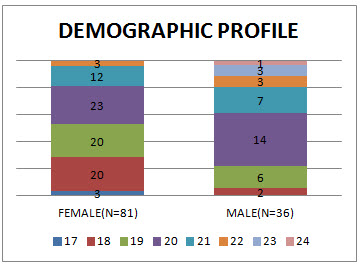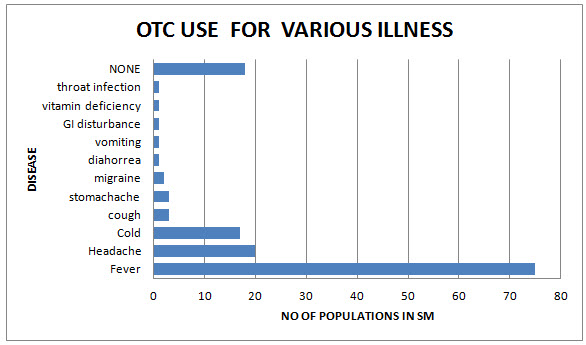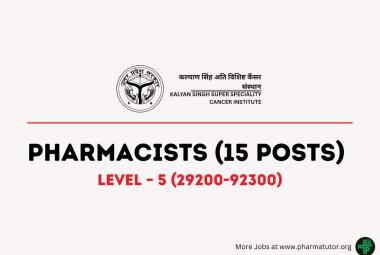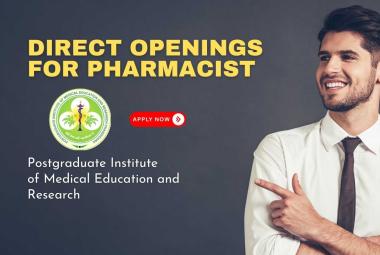{ DOWNLOAD AS PDF }
ABOUT AUTHORS
Muthyala Nagavamsidhar*1 , Athifa Benzeer1, Suman A1., Altaf M.1, Qadrie ZL.2
*1 Department of Pharmacy Practice, Pratishta Institute of Pharmaceutical Sciences, Suryapet, Hyderabad, Telangana
2 Department of Pharmacy Practice, Pratishta Institute of Pharmaceutical Sciences, Suryapet, Hyderabad, Telangana
ABSTRACT:
Background: A self medication is most common in almost all countries on the globe. The practice of self care is high in both educated and uneducated population .These practice of self medications has both beneficial and potential risk and need proper knowledge towards the self care.
Objectives: The objectives of study were: To know the reason for self medications and to determine the practice of self medication for various illness and use of over -the -counter drugs
Methods: In this cross-sectional study, a validated self-administered, questionnaire was used to collect data among pharmacy students.
Results: Of the 117 students, 36 were males and 81 were females. Out of 117 students, 53 students practice self medications for minor illness and remaining reported various reasons for self care. Most commonly consumed OTC medications are analgesics for fever and pain.
[adsense:336x280:8701650588]
Reference Id: PHARMATUTOR-ART-2605
|
PharmaTutor (Print-ISSN: 2394 - 6679; e-ISSN: 2347 - 7881) Volume 6, Issue 9 Received On: 09/05/2018; Accepted On: 01/08/2018; Published On: 01/09/2018 How to cite this article: Nagavamsidhar, M., Benzeer, A., Suman, A., Altaf, M. and Qadrie, Z. 2018. Self Medication: Reasons of self care in Pharmacy Students. PharmaTutor. 6, 9 (Sep. 2018), 16-19. DOI:https://doi.org/10.29161/PT.v6.i9.2018.16 |
INTRODUCTION:
Self medication is the commonest self-care practice which is irrational use of drug without proper knowledge towards medication or proper advice from health care professionals (Mohamed Irfadh et al, 2013). The practice of self medication or OTC medication is almost common in all developing countries.
The most common OTC medications are Antipyretics, Analgesics, NSAIDs, Antihistamines, laxatives ,vitamin supplement and cough suppressants etc (Banerjee et al,2012).OTC medication can leads to abuse in case of opiods like codeine due to habitation and overdose of these OTC medication leads to organ damage , toxicity and even death i.e. ,NSAIDs induced nephrotoxicity and increase risk of stroke.(Bell,2011)Using antibiotics as SM may lead to drug resistance which may lead to fatal conditions.
In general self medication is common in both educated and illiterate population irrespective of gender, age, race and region. WHO defines as “Self-medication is the selection and use of medicines by individuals to treat self-recognized illness or symptoms”. on other hand self medication have both beneficial and potential risks .
Potential benefits
• An active role in his or her own health care
• Self-reliance in preventing or relieving minor symptoms or conditions
• Education opportunities on specific health issues (i.e. stop smoking aids and products to treat heartburn)
• Convenience
• Economy, particularly since medical consultations will be reduced or avoided. (WHO,2000)
At community level
Good self-medication can also provide benefits such as:
• Saving scarce medical resources from being wasted on minor conditions
• Lowering the costs of community funded health care programs
• Reducing absenteeism from work due to minor symptoms
• Reduce the pressure on medical services where healthcare personnel are insufficient
• Increase the availability of health care to populations living in rural or remote areas. (WHO, 2000)
Potential risks
• Incorrect self-diagnosis, choice of therapy
• Failure to seek appropriate medical advice promptly
• Failure to recognize special pharmacological risks and severe adverse effects
• Failure to recognize or self-diagnosis contraindications, interactions, warnings and precautions
• Failure to recognize that the same active substance in different brands
• Failure to report current self-medication to the prescribing physician (double medication/harmful interaction)
• Failure to recognize or report adverse drug reactions
• Incorrect route of administration
• Inadequate or excessive dosage
• Excessively prolonged use
• Risk of dependence and abuse
• Food and drug interaction (WHO, 2000)
The practice of SM is quite irrational use of drugs mainly OTC medications which may lead to wrong diagnosis ,misuse, adverse drug and allergic reactions and even death. These can be overcome with proper communication with communities using interactive session by healthcare professionals. The main reasons of self medication in population are cost effectiveness, minor illness, emergency use etc.
Abbreviations:
|
OTC |
Over the counter drugs |
|
SM |
Self medication |
|
WHO |
World health organization |
|
NSAIDS |
Non steroidal anti inflammatory drugs |
Methods:
A cross-sectional study was conducted in a pharmacy college were both male and female of age between 17-24 years were taken in to study. A six closed end questionnaire was prepared and collected within a period of 3 months. This conduct of study was limited to class room with permission of respective class in charge. The study was conducted to known the reason of OTC or Self medication use in students and to note the OTC medication in use for minor illness. These respective results were obtained using Microsoft word and excel. All the research was performed under the approval of Institutional Human Ethical Committee (IHEC).
Results: A total number of 117 students participated in study has been figured out below in figure no. 1. Out of which 36 were males and 81 were females .On collection of questionnaire it was found that (N=53) use SM for minor illness (45.29%) and (N=42) for emergency use (35.89%), (N=8) for cost effectiveness (6.8%) and (N=2) for time saving (1.7%). Others provided mixed reasons (N=90) like time saving& emergency use (3.41%), minor illness& cost effectiveness, emergency use& minor illness and others accounts (0.85%) and 2.56% (N=3) have not provided any information which has been represented in figure no 2.

Figure no:1-Demographic profile of study population

Figure no: 2- Representation of self medication use in pharmacy students in percentage
NOW YOU CAN ALSO PUBLISH YOUR ARTICLE ONLINE.
SUBMIT YOUR ARTICLE/PROJECT AT editor-in-chief@pharmatutor.org
Subscribe to Pharmatutor Alerts by Email
FIND OUT MORE ARTICLES AT OUR DATABASE
Discussion:
Now-a-days Self medication has become a most common and fatal risk to people especially young age group throughout the globe. The practice of self medication is also seen in health care professionals and students which is well shown in figure no: 3 (Badiger et al, 2012). These cause fatal adverse effects, drug toxicity, organ failure, drug abuse and resistance in case of antibiotics and death. It has been found that the practice of OTC or SM is common in females than in males in treating menstrual pain. According to many studies, most common OTC medication are analgesics to relieve pain and also have found to have organ damage in long term use i.e., liver failure in paracetmol and Nsaids causes renal failure(Mc Laughlin et al ,1998). In our study we also found that use of analgesics in relieving pain. Firstly, OTC medication use in these study group was found to be antipyretics (64.1%), analgesics(21.36%), antihistamines (14.5%) and cough syrups (2.56%) and multivitamins (0.85%).

Figure no :3- Representing the use of OTC medication for various minor illness
CONCLUSION:
Self medication has both beneficial and potential risk effects. In case of health care professional and students , the practice of self medication may have less potent than in general public these is because of knowledge and attitude towards the SM. Sometimes there is a risk of drug abuse too. The practice of self medication is safely ensured with proper awareness and guidance programs and counseling session in campaign, hospital and communities.
REFERENCE:
1. Badiger, S., Kundapur, R., Jain, A., Kumar, A.,Pattanshetty, S., Thakolkaran, N., et al. (2012) ; Selfmedication patterns among medical students in South India. Australas Med J. ; 5(4) : 217-220.
2. Banerjee I, Bhadury T. (2012) ; Self-medication practice among undergraduate medical students ina tertiary care medical college, West Bengal. Journal of postgraduate medicine. Apr-Jun ; 58(2) :127-131.
3. Bell E, Dangers Of Self-Medications (2011) http://EzineArticles.com/?expert=Eva_Bell
4. Guidelines for the regulatory assessment of medicinal products for use in self-medication. Geneva: WHO; 2000.
5. Mc Laughlin, J.K., Lipworth, L., Chow, W.H., Blot,W.J. (1998) ; Analgesic use and chronic renal failure: acritical review of the epidemiologic literature.Kidney Int. ; 54(3) :679-686.
6. Mohamed Irfadh, Mohamed Azhar, Kabisha Gunasekaran, et al .(2013) ; Self-medication: Awareness and Attitude among Malaysian Urban Population, , International Journal of Collaborative Research on Internal Medicine & Public Health, 5(6) ; 436-443
NOW YOU CAN ALSO PUBLISH YOUR ARTICLE ONLINE.
SUBMIT YOUR ARTICLE/PROJECT AT editor-in-chief@pharmatutor.org
Subscribe to Pharmatutor Alerts by Email
FIND OUT MORE ARTICLES AT OUR DATABASE









